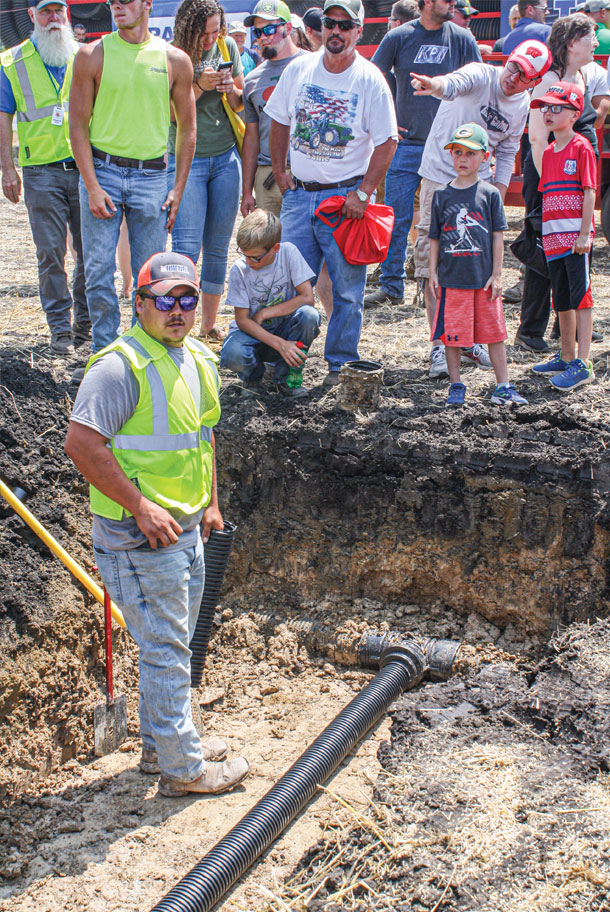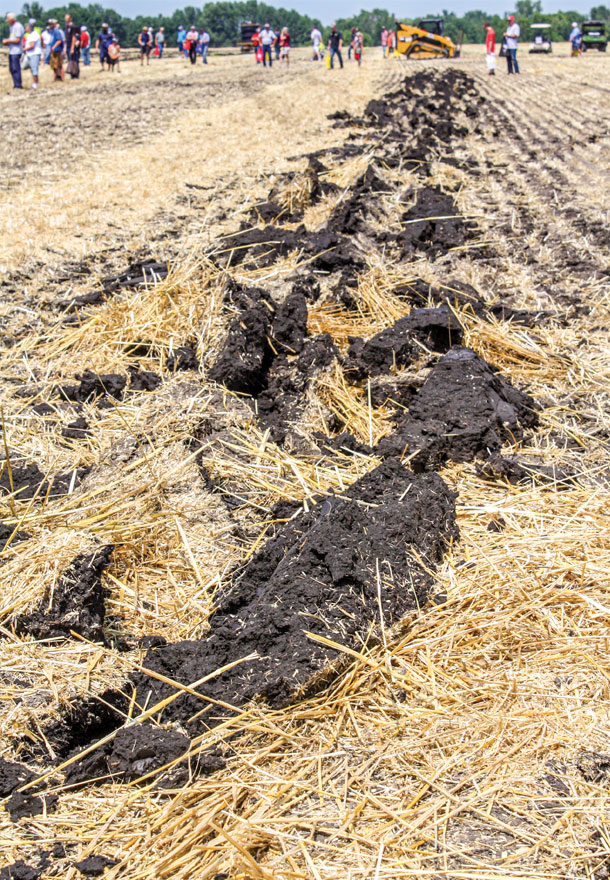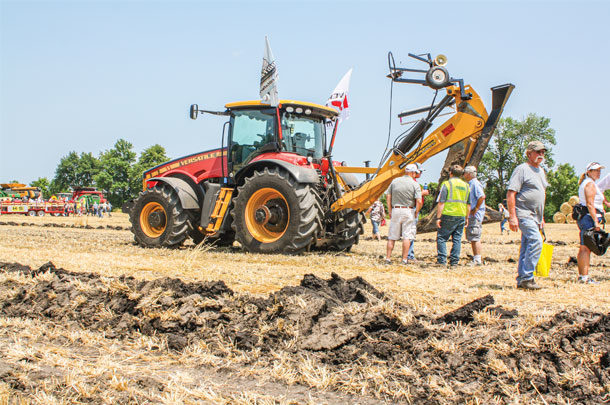Buried almost 3 feet below the soil surface is Walter’s secret weapon for optimizing yields: a labyrinth of lateral drainage tile lines that divert water away from saturated fields and into ditches and outlets, thus regulating moisture levels while also preventing nitrate runoff.
Located near Johnson Creek, Wisconsin, Walter and his family operate Walter Grain Farms. They run 2,500 acres of their own ground, along with 3,500 acres of rented land, averaging 238 bushels per acre on corn and 71 bushels per acre on soybeans. They also grow some winter wheat and hay. The farm hosted Wisconsin Farm Technology Days in July 2019, a three-day outdoor farm show, complete with field-tiling demonstrations.
Walter recalls installing the first drainage tile in his farm fields in 1974, and he hasn’t stopped yet. In fact, the family runs a custom tiling business, BDT Drainage. Over a 40-year span, Walter estimates the company has installed somewhere between 20 million to 30 million feet of drainage tile on cropland primarily located in a tri-county area around Jefferson, Wisconsin, and extending into northern Illinois.

Walter firmly believes a tiled field is a game-changer, allowing him to get in the fields faster despite wet springs and to grow healthier plants.
“Does it make a difference? Yes,” he affirms. “Overall, on average, we are running 28 percent better with grid tiling on everything [including side hills and tops of hills].”
In fact, side hills are a common job for him these days. “Side hills are kind of mandatory,” Walter explains. “Look at it as a big sponge. If it’s saturated all the time and you get a quarter-inch of rain, it all runs off the side hill. If the sponge is dry and able to absorb, the water will run down into the ground instead of across.”
A misconception with tiling is that it can remove too much moisture, thus leaving the soil dry. According to Mark Wieland, territory sales manager with Timewell Pipe (BDT Drainage’s supplier), even on sandy soil, that is not the case. “First and foremost, tiling allows soil to not be saturated over time. … The tile just removes the excess moisture so the field can take more moisture instead of it running off,” Wieland says.
Tiling can offer major advantages for farmers looking to conserve the environment, particularly in areas where dairy manure is widely used as fertilizer. Wieland adds, “Nitrogen is a concern. If yields are not there to utilize what is applied, the nitrogen will bind with water and risk becoming nitrate runoff.”

In a tiled field, the drainage line moves this water to a natural outlet, like a ditch. Here, edge-of-field practices like natural buffers created by wood chips provide organic matter for the nitrates to rebind to instead of entering waterways and causing contamination issues.
In addition to runoff prevention, Walter uses tiling as a way to control the water tables in his fields. Most of his land has grid tiling, where lines are spaced 30 feet apart across the field. Using a system of overflow and release valves, he can back up the water to hold it in place or drain it off, making his decisions based on the weather forecast.
“If it’s too wet, I pull the handle and drain it out,” Walter explains. “It’s the next best thing to ordering rain.” He adds this is especially helpful in the wintertime to keep nitrates from entering the nearby river.
Walter says once drainage tile lines are buried, they are usually trouble-free. Once in a while, he may see some very old tiling in a field that has collapsed due to pressure, but assures the modern corrugated material is made to last. Plugs in the tile usually flush themselves out, though he must occasionally manually remove animals that get lodged in the line.
Precision farming technology allows Walter and other farmers to monitor the benefits of tiling by comparing crop yields and field conditions. “You can tell what every square foot of the field is doing,” he says. “That’s where you notice the biggest bang for your buck.”
For farmers looking into tiling their fields, Walter suggests asking others who have installed it for their feedback. For those looking to try it out on a few acres, he recommends prioritizing the problem fields first. “Start with the ones that get planted one out of every five years,” he says. “You can’t just throw money away every year and get nothing back.”
Depending on the level of saturation, Walter says the payback with drainage tiling can be as quick as two to three years on some fields, and seven to 10 years on other fields. Soil structure and field conditions are among the variables that influence the return.
Walter sees other farmers in his area recognizing the benefits of tiling as a means to deal with weather patterns dropping more precipitation than in the past, and he also notices interest growing in other major crop-producing areas of the Upper Midwest, into Illinois and the Dakotas.
Walter concludes, “I thought we’d run out of dirt to tile 30 years ago, but that hasn’t happened yet.” ![]()
PHOTO 1: The Wisconsin Farm Technology Days demonstration included a pull-behind tile plow to install laterals.
PHOTO 2: During the 2019 Wisconsin Farm Technology Days hosted at Walters Grain Farms, visitors watched a tiling demonstration on a 20-acre winter wheat field. The pattern tile included a 6-inch main line running 600 feet along the road to a natural outlet (ditch), at a depth ranging from 30-38 inches. Laterals tied into the main every 30 feet.
PHOTO 3: A self-propelled or pull-behind tile plow can be used to lay a tile line under the soil surface. Photos by Peggy Coffeen.

-
Peggy Coffeen
- Editor
- Progressive Dairy
- Email Peggy Coffeen










